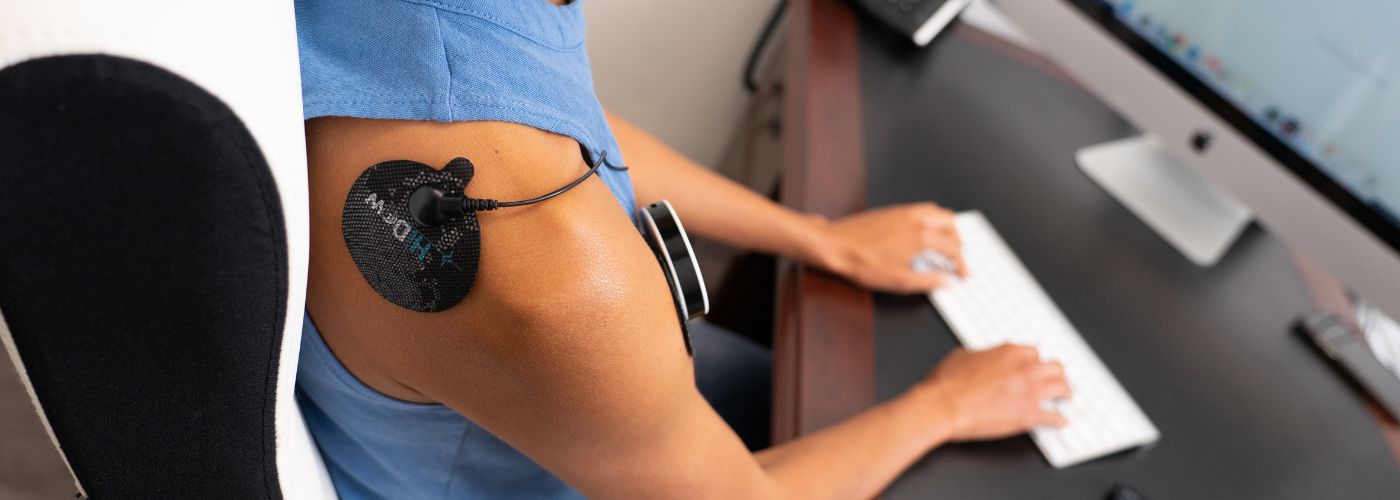As you settle in for a soothing session with your TENS unit, the last thing you want is to be disrupted by worn-out gel pads. These sticky little wonders are the unsung heroes of your pain relief regimen, providing the crucial connection between electrodes and skin. Let’s unlock the secrets that will not only extend the life of your gel pads but also elevate your overall TENS experience. Here’s are some of the best maintenance tips for TENS unit gel pads.
Cleaning Maintenance Tips For TENS Unit Gel Pads
To prolong the life of your TENS unit gel pads, ensure that your skin is clean and free from any oils or lotions before attaching them. Cleaning the gel pads regularly with a damp cloth can help remove any residue and maintain their adhesive properties for longer.
Remember to store the gel pads in their original packaging or a ziplock bag when not in use to prevent them from drying out.
Avoid using abrasive products or alcohol-based cleaners on the gel pads, as they can damage the surface and reduce their stickiness. It’s also important to inspect the gel pads regularly for any signs of wear or tearing, as damaged pads may not provide effective stimulation during therapy sessions.
How To Store Your TENS Gel Pads
To maintain the stickiness and effectiveness of your TENS unit gel pads, proper storage is crucial. When not in use, make sure to keep the gel pads in their original packaging or a sealable plastic bag to prevent them from drying out or collecting dust.
Additionally, store them in a cool, dry place away from direct sunlight or extreme temperatures. Avoid storing the gel pads on surfaces that could damage the adhesive layer, such as rough or dirty surfaces.
Remember to clean your skin thoroughly before each use to prolong the life of the gel pads and ensure optimal conductivity.
How To Extend The Lifespan Of Your TENS Unit Gel Pads
One effective method to extend the lifespan of your TENS unit gel pads is by using a conductor spray. This type of spray helps to improve the conductivity between the pads and your skin, allowing for better transmission of electrical impulses.
By regularly applying conductor spray on your gel pads, you can ensure that they remain sticky and adhesive for a longer period of time, thus avoiding the need for frequent replacements.
Common Mistakes When Using TENS Unit Gel Pads
One common mistake when using TENS unit gel pads is not properly cleaning the skin before application. Oils, lotions, and dirt on the skin can reduce the effectiveness of the gel pads and prevent optimal conductivity.
Another mistake to avoid is reusing gel pads beyond their recommended lifespan. Over time, the adhesive on the pads degrades, leading to poor adhesion and decreased effectiveness. It’s crucial to follow the manufacturer’s guidelines for replacing gel pads regularly to maintain optimal performance.

Lastly, not storing gel pads properly can also impact their longevity and performance. Storing them in a dusty or humid environment can compromise their adhesive properties and shorten their lifespan.
To prevent this, keep your gel pads in a sealed storage bag in a cool, dry place between uses to preserve their stickiness and prolong their effectiveness.
How Long Do TENS/EMS Gel Pads Last?
How long can TENS unit gel pads truly last? The lifespan of EMS gel pads largely depends on frequency of use and proper maintenance. Generally, these pads can last anywhere from 20 to 30 uses before needing replacement.
Regular cleaning and storage play a crucial role in extending the longevity of EMS gel pads. After each use, it’s important to gently clean the gel surface with a damp cloth and store them in a cool, dry place to prevent drying out or deterioration.
Additionally, ensuring that the pad is properly aligned and positioned on the skin during use can also help prolong its effectiveness and lifespan. Remember, taking good care of your EMS gel pads will not only ensure optimal performance but also save you money in the long run.
When To Replace A Gel Pad For A TENS Unit?
One of the most common signs of a bad TENS unit gel pad is its reduced stickiness. If you find that the gel pad is not adhering well to your skin or keeps slipping during use, it may be time to replace it.
This lack of proper adhesion can lead to an ineffective treatment as the electrical impulses may not be delivered efficiently. This can affect your use when using a TENS unit for knee pain.
Another indication that your gel pad needs replacement is visible wear and tear. Over time, frequent use can cause the gel pad to deteriorate, resulting in cracks or tears on the surface.
This compromises its ability to conduct electricity properly and may lead to uneven distribution of stimulation. To ensure optimal performance and comfort during TENS therapy sessions, it’s crucial to monitor the condition of your gel pads regularly and replace them when necessary.

